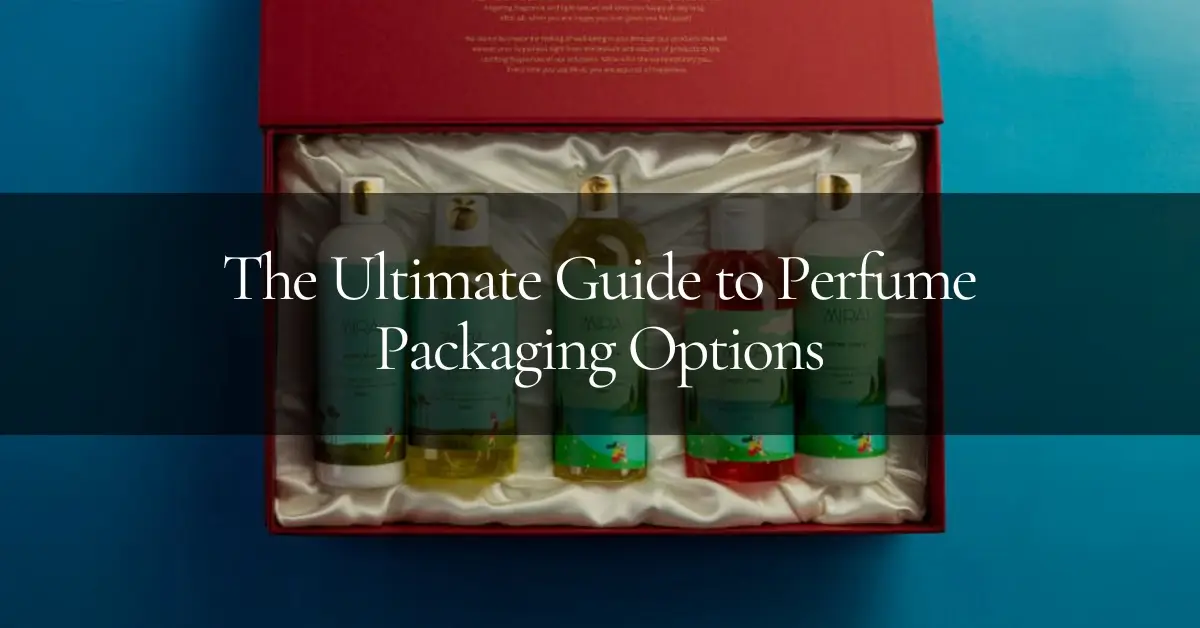Introduction to Perfume Packaging
In the competitive perfume industry, packaging is more than just a container; it is the product’s first impression and a reflection of the fragrance’s essence. Beyond aesthetics, perfume packaging serves the critical functions of protecting the fragrance, maintaining its integrity, and communicating the brand’s identity. Striking the right balance between luxury packaging and practical functionality is essential to captivate consumers and ensure product longevity.
Understanding the Core Elements of Perfume Packaging
Perfume packaging involves multiple components, each contributing uniquely to the product’s lifecycle, from protection and presentation to branding and functionality.
Primary Packaging: Bottles and Atomizers
The perfume bottle is often a centerpiece of the product, designed to reflect the fragrance’s character and appeal to consumers on an emotional level. Beyond its aesthetic role, the bottle serves as a storage solution that preserves the fragrance’s quality. Atomizers, such as sprays and droppers, are crucial components that ensure a seamless and precise application, enhancing the user experience.
Secondary Packaging: Boxes and Cartons
Perfume packaging provides an essential protective layer that shields the bottle from external damage while serving as a canvas for branding and storytelling. It often features intricate designs, unique textures, and detailed messaging that communicate the brand’s ethos and elevate the overall perception of the product. Secondary packaging also enhances shelf appeal, making the product stand out in retail environments.
Tertiary Packaging: Logistics and Protection
Tertiary packaging plays a vital role in ensuring that the product reaches its destination intact. Designed for transportation and bulk handling, it focuses on protecting multiple units during transit while addressing sustainability standards. By balancing durability with eco-friendly materials, tertiary packaging supports operational efficiency and reinforces a brand’s commitment to sustainability.
Design Trends in Perfume Packaging
Modern perfume packaging trends are heavily influenced by consumer preferences, cultural aesthetics, and technological advancements, making it a dynamic space for innovation.
Minimalism: A Timeless Approach
Minimalistic designs emphasize clean lines, understated elegance, and a focus on simplicity, resonating with contemporary consumers who value sophistication and subtlety. This trend aligns with luxury design principles, offering a timeless appeal that transcends fleeting fads. The uncluttered aesthetic also enhances the fragrance’s exclusivity and premium positioning.
Ornate Designs: Emphasizing Luxury and Exclusivity
On the opposite end of the spectrum, ornate packaging leverages intricate patterns, bold embellishments, and jewel-like accents to create a sense of opulence. These designs cater to the luxury perfume market, appealing to consumers who associate rich detailing with exclusivity and high value. Ornate packaging often becomes a collector’s item, adding to the product’s allure.
Personalization: Catering to Unique Consumer Preferences
Personalization is a growing trend, with brands offering custom engravings, tailored designs, and limited editions to forge a deeper connection with consumers. By enabling personalized perfume packaging, brands tap into the consumer’s desire for uniqueness and self-expression, making the product more memorable and cherished.
The Role of Branding in Packaging
Effective branding in packaging is an art form, transforming a functional container into a powerful marketing tool that conveys the brand’s story and values.
Logo Placement and Typography
A strategically placed logo not only reinforces authenticity but also acts as a visual signature that distinguishes the product from competitors. Typography, from elegant scripts to bold, modern fonts, further enhances the packaging’s visual identity, offering insights into the fragrance’s personality and positioning. Together, these elements build a cohesive and impactful brand identity.
Colors and Their Psychological Impact
Colors play a significant role in evoking emotions and shaping consumer perceptions. Soft pastels often convey serenity and sophistication, while gold and metallic tones exude luxury and prestige. Deep reds and blacks, on the other hand, symbolize passion and mystery. By leveraging color psychology, brands can create packaging that resonates deeply with their target audience.
Storytelling Through Design
Every detail in packaging design, from the texture of the material to the imagery used, contributes to the brand’s narrative. A well-crafted package tells a story that aligns with the fragrance’s theme, offering consumers an immersive experience. This storytelling aspect not only differentiates the product but also builds a stronger emotional connection with the consumer.
Functionality and Consumer Experience
While aesthetics are important, functionality often determines whether perfume packaging meets the practical needs of the consumer, ensuring satisfaction and convenience.
Dispensing Mechanisms: Pumps, Droppers, and Sprays
Dispensing mechanisms, such as pumps, droppers, and sprays, are essential for precise and efficient application. A well-designed mechanism prevents wastage and ensures that the fragrance is dispensed evenly, enhancing the overall user experience. Consumers appreciate mechanisms that are intuitive, reliable, and easy to use.
Portability Considerations
Portability is a key consideration for today’s consumers, who often seek travel-friendly designs that fit seamlessly into their busy lifestyles. Compact bottles, miniature versions, and refillable vials cater to this demand, offering convenience without compromising on style. These options are particularly popular for individuals who wish to carry their signature scent wherever they go.
Ensuring Product Longevity and Freshness
Perfume Packaging also plays a critical role in preserving the fragrance’s quality over time. Air-tight seals, UV-resistant materials, and protective coatings help maintain the perfume’s freshness and potency, ensuring a consistent sensory experience. These features are vital for building consumer trust and loyalty.
Sustainability in Perfume Packaging
With growing environmental awareness, sustainable packaging has become a key focus for both brands and consumers.
Biodegradable and Recyclable Materials
The use of biodegradable plastics, recycled paper, and glass has gained momentum as brands strive to reduce their environmental impact. These materials offer eco-conscious consumers a guilt-free way to enjoy their favorite fragrances, aligning with broader sustainability goals and ethical practices.
The Impact of Refillable Systems
Refillable systems are an innovative approach to reducing waste, enabling consumers to reuse their perfume bottles multiple times. By offering refill stations or easy-to-replace cartridges, brands can enhance the green consumer experience while fostering loyalty and repeat purchases.
Brand Initiatives for Greener Solutions
Many leading perfume brands are launching initiatives to promote sustainable packaging campaigns, often in collaboration with environmental organizations. These efforts not only support global sustainability goals but also enhance brand reputation by demonstrating corporate responsibility.
Challenges in Perfume Packaging
The complexity of perfume packaging design presents several challenges, requiring strategic solutions to balance competing priorities.
Balancing Cost and Quality
Premium materials and intricate designs can escalate production costs, making it challenging to deliver high-quality packaging at a competitive price. Brands must innovate to find cost-effective solutions that maintain the packaging’s visual appeal and durability while ensuring profitability.
Addressing Counterfeit Concerns
Counterfeiting is a persistent issue in the perfume industry, threatening brand integrity and consumer trust. By incorporating sophisticated packaging designs, holograms, and unique identifiers, brands can deter counterfeiters and protect their products from unauthorized replication.
Adapting to Diverse Market Regulations
Global distribution requires compliance with diverse market regulations, which can vary significantly across regions. From labeling requirements to material restrictions, adapting to these standards is essential for seamless international operations, adding another layer of complexity to packaging design.
Future of Perfume Packaging
The future of perfume packaging is shaped by technological advancements, shifting consumer demands, and a growing emphasis on sustainability.
Technological Advancements
Emerging technologies such as 3D printing and smart materials are revolutionizing luxury packaging design, enabling brands to create intricate, customized designs at scale. These innovations open up new possibilities for creativity and efficiency, setting the stage for the next generation of packaging.
Smart Packaging: QR Codes and Augmented Reality
Smart packaging features, including QR codes and augmented reality (AR), are transforming how consumers interact with products. These digital enhancements allow customers to access detailed information, fragrance stories, and personalized recommendations, creating a more engaging and interactive experience.
Conclusion
As consumer preferences continue to evolve, future designs will prioritize inclusivity, sustainability, and personalization. The focus will shift toward creating packaging that not only appeals visually but also aligns with ethical values and offers a tailored experience.
The evolution of perfume packaging underscores its pivotal role in enhancing brand value and consumer experience. By blending luxury packaging with functionality and sustainability, brands can create compelling products that resonate in a dynamic market landscape.

